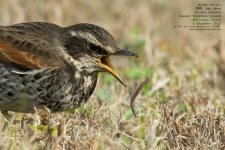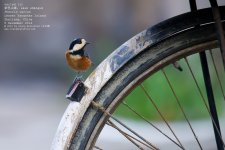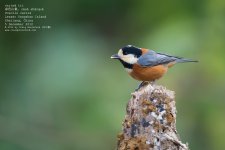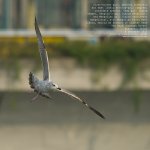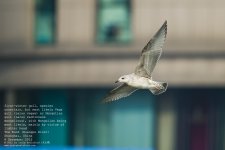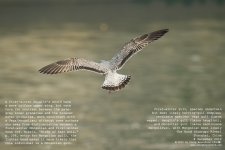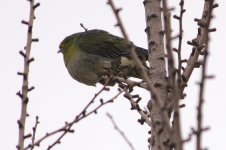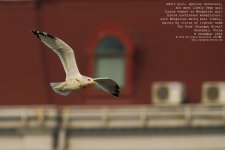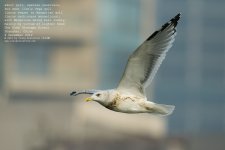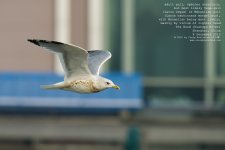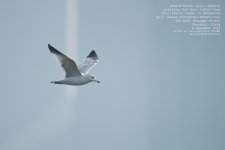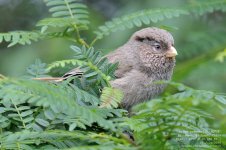thrush
Craig Brelsford (大山雀)
Lesser Yangshan Island, 5 Dec. 2012
On Wednesday I spent the day on Lesser Yangshan Island. I failed to find the Eurasian bullfinch, although one apparently was present at Garbage Dump Valley. I enjoyed the brilliant sunshine and cool December air, and I reaffirmed my commitment to being a photographically oriented birder.
My day began at 04:15 at my apartment near Zhongshan Park in Shanghai. By 05:30 I was on the road, driving (as is my wont) a Chevy Lova rented from Avis. I arrived at the Garbage Dump Coastal Plain at 06:45. I pulled out my kick-ass lens, the Nikon 600 mm f/4, and attached it to my Nikon D3S, now two years old and still pumping out perfect images. It was time to rock 'n' roll . . .
My first bird was a dusky thrush, feeding on the track leading toward the dump. Eurasian tree sparrows were there, as was a fearless black-backed wagtail (Motacilla alba lugens). The black-backed is a subspecies of the white wagtail; this individual was clearly a winter lugens, for in addition to its black eye-stripe it had the grey back with black splotches.
Walking past the smelly garbage-processing center, teeming with cats, I found a male Daurian redstart. Further up, a flock of maybe six Far Eastern great tits (Parus minor) greeted me cheerfully. A pair of varied tits was associating with the great tits, and elegant (yellow-throated) buntings were keeping a low profile in the weeds. A few pale thrushes seem to have made themselves at home in the Valley; I photographed one in a former brushy area now cleared and converted into a photographic setup. An eastern buzzard was flying overhead.
A group of photographers from Hangzhou arrived. I didn't recognize any of them, but they all knew who I was. In the central "courtyard" area (two empty circular basins, two or three tall trees), we "togs" lined up near some of the props set up by earlier photographers. The tits did not disappoint, landing on the props and a hundred other places and energetically investigating everything. A varied tit explored a bicycle, even checking under the seat for bugs. I got a nice shot of it perching on the fender. A female Daurian redstart was in the branches above, and a red-flanked bluetail made an appearance. Later, I saw a Eurasian wryneck near the outhouse.
The problem with Lesser Yangshan is that Garbage Dump Valley is the best birding spot on the island, so much so that a full day could profitably be spent there. But I like to stretch my legs, so my habit is to break up my day into two long sessions (early morning, late afternoon) at the Garbage Dump, with a survey of the other locations in between. This time, my method probably denied me a view of the Eurasian bullfinch.
I withdrew from Garbage Dump Valley, the sun warm on my face. I was sleepy. After a quick look at the thrushy field along Donghai Avenue (situation normal: dozens of thrushes, almost all dusky, combing the dormant yellow grass), I doubled back to the base of the "Temple Mount," that is, Lesser Guanyin Mountain. But the bright sun meant that birds would be hard to find at that hour, and in any case, the warm rays were caressing me. I fell asleep in the driver's seat.
I awoke 30 minutes later, still groggy. There was only one solution: caffeine. I forwent the Temple and drove to the convenience store in the built-up area near the Shilong Wonder. There, I bought a can of Red Bull. I ate my lunch just outside the gate to the Garbage Dump Coastal Plain, a trio of dusky thrushes joining me. One boldly foraged just a meter away from the closed door of my Lova. I also took an interest in a female blue rock thrush. Amur wagtails (M. a. leucopsis) were foraging along the road. The Red Bull worked its magic; I was fully awake.
Along the strip of grass at the entrance to the Garbage Dump Coastal Plain, I invested 15 minutes in photographing the duskies from the Lova. I once again failed to record any of the many short duels the duskies engage in. My consolation prize, however, was a long, close look at the foraging behavior of these birds. Here indeed, the bird photographer has an advantage over the birder who hastily moves to the next species before adequately appreciating the species in front of him. Peering through my viewfinder, I watched the dusky tilt its head in typical thrush-like fashion, the better to hear the worm wriggling below. Most of its thrusts netted little or nothing, but occasionally the dusky would pull an earthworm out of nowhere. My camera recorded those lightning-fast attacks, movements too fast for the human eye to see.
The Hangzhou guys came back to their cars. They told me they'd seen the bullfinch up by the entrance to the tunnel. Eureka! My moment was here. I was itching to go, but the guys first wanted a quick group-photo session (Chinese photographers commonly request a picture with the well-known foreign photographer "大山雀"). I then hoofed across the Coastal Plain to the Valley.
Near the tunnel entrance I planted my tripod. I scoured the tight little area, finding only Chinese bulbuls, long-tailed shrikes, and pale thrushes. The great tits came to drink from the trickling spring. A northern hobby was soaring far above. Where was my bullfinch?
A red-flanked bluetail, an adult male, bounced up to me on the concrete path. The habitat along the sidewalk was perfect for him, so he hung around, once or twice flying straight at me in pursuit of a flying insect. Half an hour went by, the bluetail always near. Even though I've had similar episodes many times with bluetails and other friendly species, the experience of getting close to a wild bird never feels old, and it never fails to delight me. This little traveler was providing me the birder's equivalent to a soak in a hot spring or a freshly brewed cup of Chinese yellow-rose tea. My time with the bluetail was a moment for relaxation and appreciation.
Not only was the visit from this friendly bird emotionally satisfying, but it also provided an opportunity for close observation. During my recent work with the Japanese robins, I noted how much at home they are close to the ground. Though the robins prefer to perch on something rather than simply stand on the ground (I often saw them standing on a stick or root just a centimeter high), they very rarely were perching more than half a meter from the ground, and they almost never were perching in the open. The Daurian redstarts, by contrast, though very much willing to go to the ground, are more aerial and arboreal, spending much of their time in the lower canopy. The habits of the bluetail fall between those of the redstart and robin. The bluetail was inserting itself into tangles that a redstart would shy away from but a robin would feel at home in. But the bluetail never remained for long in the thick bushes, always emerging and perching conspicuously. These open perches were usually no higher than 2 m above the ground, and they were rarely the branches of standing trees, being instead stumps, rocks, the stalks of smaller plants, and the branches of fallen trees. There is, however, much overlap between the habitat of the Daurian redstart and that of the red-flanked bluetail, as even the birds themselves know; four times, a female Daurian swooped down and chased off the slightly smaller bluetail. Fittingly, the fleeing bluetail would head for the thickest bushes, where the redstart would not follow.
I walked through the tunnel to Hidden Pagoda Cove. I once again admired the mysterious house of worship, inside which Buddhist chants were resounding but around which there was not a living soul. The wind had picked up, making audible the crashing waves below. The water, suffused with the outflow of the Yangtze River, is muddy brown, robbing the Hidden Cove of some of its romance. A view of a bullfinch would have infused the cove with birding romance, but there was none to be seen. A female blue rock thrush was the most notable bird there.
I retraced my steps through the tunnel, down Garbage Dump Valley, and across the Garbage Dump Coastal Plain. I wistfully packed up my beloved equipment. I'd missed the bullfinch, but I'll be back, camera, as always, in hand. I drove home without incident.
On Wednesday I spent the day on Lesser Yangshan Island. I failed to find the Eurasian bullfinch, although one apparently was present at Garbage Dump Valley. I enjoyed the brilliant sunshine and cool December air, and I reaffirmed my commitment to being a photographically oriented birder.
My day began at 04:15 at my apartment near Zhongshan Park in Shanghai. By 05:30 I was on the road, driving (as is my wont) a Chevy Lova rented from Avis. I arrived at the Garbage Dump Coastal Plain at 06:45. I pulled out my kick-ass lens, the Nikon 600 mm f/4, and attached it to my Nikon D3S, now two years old and still pumping out perfect images. It was time to rock 'n' roll . . .
My first bird was a dusky thrush, feeding on the track leading toward the dump. Eurasian tree sparrows were there, as was a fearless black-backed wagtail (Motacilla alba lugens). The black-backed is a subspecies of the white wagtail; this individual was clearly a winter lugens, for in addition to its black eye-stripe it had the grey back with black splotches.
Walking past the smelly garbage-processing center, teeming with cats, I found a male Daurian redstart. Further up, a flock of maybe six Far Eastern great tits (Parus minor) greeted me cheerfully. A pair of varied tits was associating with the great tits, and elegant (yellow-throated) buntings were keeping a low profile in the weeds. A few pale thrushes seem to have made themselves at home in the Valley; I photographed one in a former brushy area now cleared and converted into a photographic setup. An eastern buzzard was flying overhead.
A group of photographers from Hangzhou arrived. I didn't recognize any of them, but they all knew who I was. In the central "courtyard" area (two empty circular basins, two or three tall trees), we "togs" lined up near some of the props set up by earlier photographers. The tits did not disappoint, landing on the props and a hundred other places and energetically investigating everything. A varied tit explored a bicycle, even checking under the seat for bugs. I got a nice shot of it perching on the fender. A female Daurian redstart was in the branches above, and a red-flanked bluetail made an appearance. Later, I saw a Eurasian wryneck near the outhouse.
The problem with Lesser Yangshan is that Garbage Dump Valley is the best birding spot on the island, so much so that a full day could profitably be spent there. But I like to stretch my legs, so my habit is to break up my day into two long sessions (early morning, late afternoon) at the Garbage Dump, with a survey of the other locations in between. This time, my method probably denied me a view of the Eurasian bullfinch.
I withdrew from Garbage Dump Valley, the sun warm on my face. I was sleepy. After a quick look at the thrushy field along Donghai Avenue (situation normal: dozens of thrushes, almost all dusky, combing the dormant yellow grass), I doubled back to the base of the "Temple Mount," that is, Lesser Guanyin Mountain. But the bright sun meant that birds would be hard to find at that hour, and in any case, the warm rays were caressing me. I fell asleep in the driver's seat.
I awoke 30 minutes later, still groggy. There was only one solution: caffeine. I forwent the Temple and drove to the convenience store in the built-up area near the Shilong Wonder. There, I bought a can of Red Bull. I ate my lunch just outside the gate to the Garbage Dump Coastal Plain, a trio of dusky thrushes joining me. One boldly foraged just a meter away from the closed door of my Lova. I also took an interest in a female blue rock thrush. Amur wagtails (M. a. leucopsis) were foraging along the road. The Red Bull worked its magic; I was fully awake.
Along the strip of grass at the entrance to the Garbage Dump Coastal Plain, I invested 15 minutes in photographing the duskies from the Lova. I once again failed to record any of the many short duels the duskies engage in. My consolation prize, however, was a long, close look at the foraging behavior of these birds. Here indeed, the bird photographer has an advantage over the birder who hastily moves to the next species before adequately appreciating the species in front of him. Peering through my viewfinder, I watched the dusky tilt its head in typical thrush-like fashion, the better to hear the worm wriggling below. Most of its thrusts netted little or nothing, but occasionally the dusky would pull an earthworm out of nowhere. My camera recorded those lightning-fast attacks, movements too fast for the human eye to see.
The Hangzhou guys came back to their cars. They told me they'd seen the bullfinch up by the entrance to the tunnel. Eureka! My moment was here. I was itching to go, but the guys first wanted a quick group-photo session (Chinese photographers commonly request a picture with the well-known foreign photographer "大山雀"). I then hoofed across the Coastal Plain to the Valley.
Near the tunnel entrance I planted my tripod. I scoured the tight little area, finding only Chinese bulbuls, long-tailed shrikes, and pale thrushes. The great tits came to drink from the trickling spring. A northern hobby was soaring far above. Where was my bullfinch?
A red-flanked bluetail, an adult male, bounced up to me on the concrete path. The habitat along the sidewalk was perfect for him, so he hung around, once or twice flying straight at me in pursuit of a flying insect. Half an hour went by, the bluetail always near. Even though I've had similar episodes many times with bluetails and other friendly species, the experience of getting close to a wild bird never feels old, and it never fails to delight me. This little traveler was providing me the birder's equivalent to a soak in a hot spring or a freshly brewed cup of Chinese yellow-rose tea. My time with the bluetail was a moment for relaxation and appreciation.
Not only was the visit from this friendly bird emotionally satisfying, but it also provided an opportunity for close observation. During my recent work with the Japanese robins, I noted how much at home they are close to the ground. Though the robins prefer to perch on something rather than simply stand on the ground (I often saw them standing on a stick or root just a centimeter high), they very rarely were perching more than half a meter from the ground, and they almost never were perching in the open. The Daurian redstarts, by contrast, though very much willing to go to the ground, are more aerial and arboreal, spending much of their time in the lower canopy. The habits of the bluetail fall between those of the redstart and robin. The bluetail was inserting itself into tangles that a redstart would shy away from but a robin would feel at home in. But the bluetail never remained for long in the thick bushes, always emerging and perching conspicuously. These open perches were usually no higher than 2 m above the ground, and they were rarely the branches of standing trees, being instead stumps, rocks, the stalks of smaller plants, and the branches of fallen trees. There is, however, much overlap between the habitat of the Daurian redstart and that of the red-flanked bluetail, as even the birds themselves know; four times, a female Daurian swooped down and chased off the slightly smaller bluetail. Fittingly, the fleeing bluetail would head for the thickest bushes, where the redstart would not follow.
I walked through the tunnel to Hidden Pagoda Cove. I once again admired the mysterious house of worship, inside which Buddhist chants were resounding but around which there was not a living soul. The wind had picked up, making audible the crashing waves below. The water, suffused with the outflow of the Yangtze River, is muddy brown, robbing the Hidden Cove of some of its romance. A view of a bullfinch would have infused the cove with birding romance, but there was none to be seen. A female blue rock thrush was the most notable bird there.
I retraced my steps through the tunnel, down Garbage Dump Valley, and across the Garbage Dump Coastal Plain. I wistfully packed up my beloved equipment. I'd missed the bullfinch, but I'll be back, camera, as always, in hand. I drove home without incident.
Attachments
Last edited:




